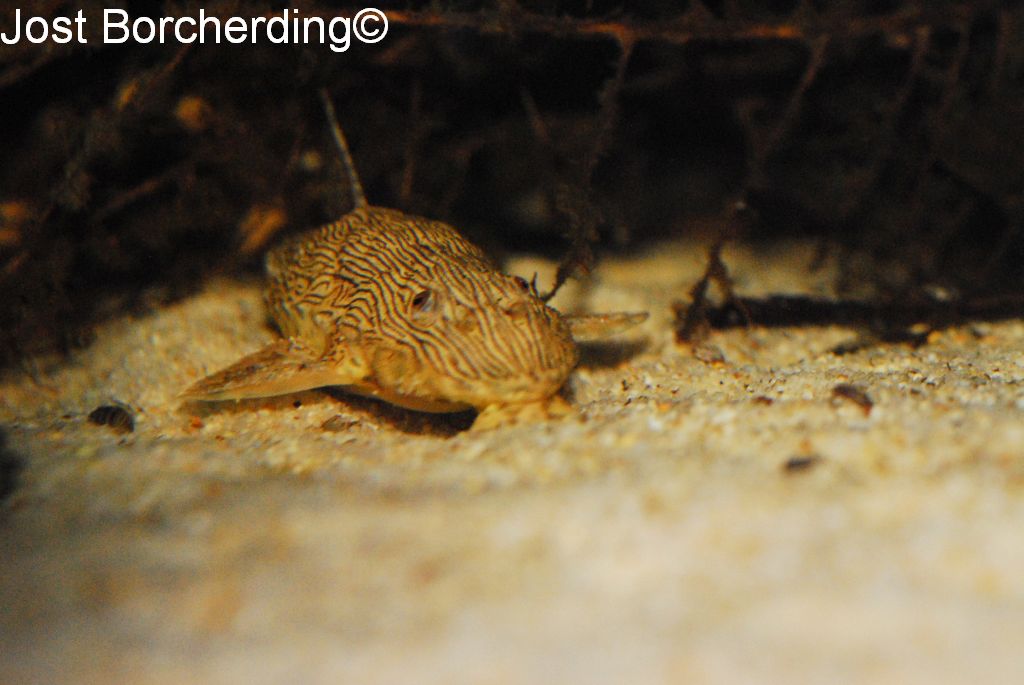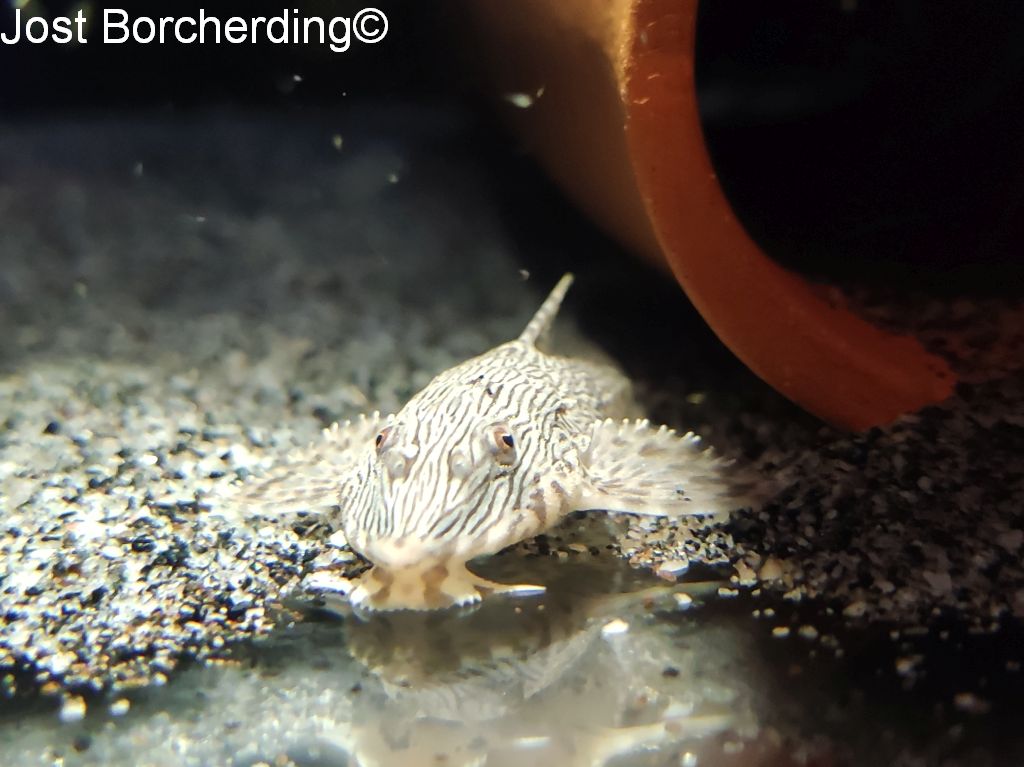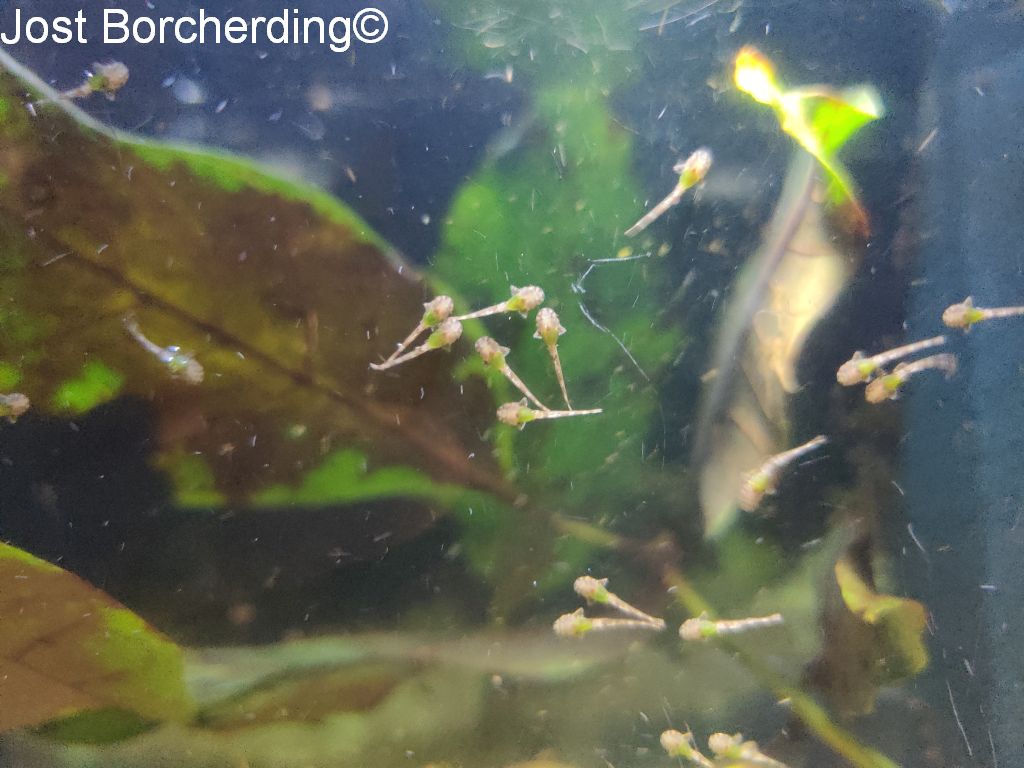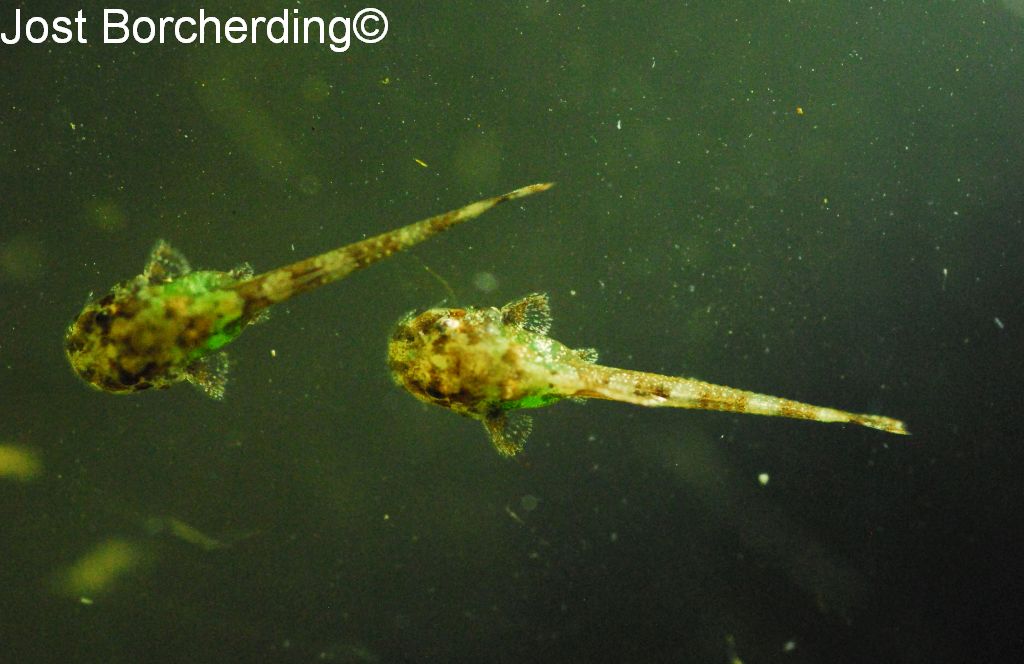Hemiloricaria sp Jacareacanga
Hemiloricaria sp. Jacareacanga is an undescribed species from the Rio Jacareacanga, a small tributary of the middle Rio Tapajos. I was able to admire the animals for the first time in March 2023 at Pier Aquatics (https://www.facebook.com/pieraquatics), probably the best aquarium shop in the world. We were there as part of the annual CSG convention in Wigan (https://www.facebook.com/groups/csg.members/permalink/2640163869464270/).
Of course I couldn’t resist and had 2 pairs packed (size about 13-15 cm). Males and females differ mainly in colouration.
Morphological differences between the sexes, such as those clearly recognisable in H. melini and H. teffeana (mohawk-like head of hair, bristles on the pectoral fins), do not appear to exist in Hemiloricaria sp. jacareacanga. They are fed plenty of frozen food, EBO spirulina paste (https://www.nature2aqua.de/produkt/ebo-spirulina-paste-premium-fish-food/?lang=en) and SAK granules (https://www.nature2aqua.de/produkt/fish-food-sak-spirulina/?lang=en), the main thing is to have a varied diet.
above the male, below the female
The colouring changes when it comes to reproduction, then the male becomes much more contrasting towards black and white. I saw the first signs of reproductive behaviour in August 2023, when one of the males moved into a continuous clay cave (https://www.nature2aqua.de/produkt/catfish-tube/?lang=en measuring 3.5×19 cm) and cleaned it very carefully.
And in September the time had come, in the evening I saw the female behind the male for the first time and the next morning the male was looking after a very large clutch with the green eggs typical of Hemiloricaria. After around 5 days, I was able to transfer the tube with the male to a large EHK (https://www.nature2aqua.de/produkt/free-floating-breeding-box-big-incl-bark-hiding-places/?lang=en), and the male was not distracted from his cleaning duties in any way.
At a temperature of around 27-28 °C, LF around 350-400 µS/cm, pH neutral to slightly acidic, I was able to observe the first larvae around 8 days after spawning and after just under 10 days almost all the larvae had hatched. The green yolk sac is clearly visible, which will probably be used up in the next 1-2 days. Only then should you carefully start feeding them for the first time (SAK Spirulina powdered food, Moina frozen food). I hope that my experience with rearing H. teffeana and H. melini will help me to achieve a good quota of growing juveniles.
By hatching the animals in the EHK, I save the young larvae from having to be caught and moved, they are directly where I want them for further breeding (of course directly with, in this case in summer still fresh walnut leaves, then soon the dried variant https://www.nature2aqua.de/produkt/walnut-leaves-for-aquarium/?lang=en). And there really are a lot of them, I estimate well over 100 young larvae.




